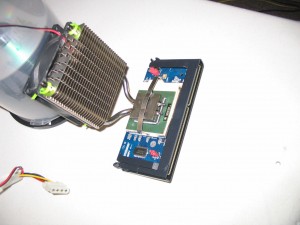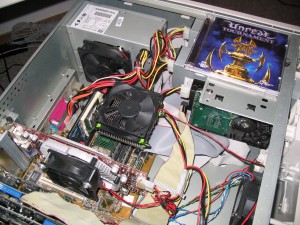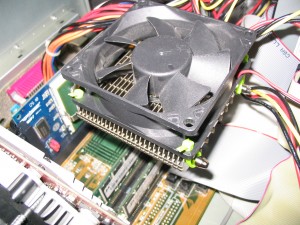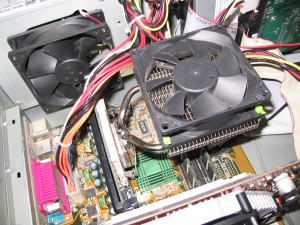swaaye wrote:If you go passive, keep in mind that the motherboard relies somewhat on CPU cooler airflow too. The VRMs are the main concern. Tower CPU heatsinks can be trouble here too. I have a Gigabyte P35-DS3R mobo that I overclocked a Q6600 on and didn't think about how the my tower heatsink had removed VRM airflow and the board is actually blackened around the FETs. Still works fine tho! 😀. But that board is also based around a fairly hardy VRM design, unlike typical old Athlon stuff.
+1 to this. Downdraft coolers do have an advantage there, otherwise you have to provide some sort of cooling for the FETs. I've seen some newer boards actually include heatsinks for this very purpose, which is nice. 😀
TELVM: It's inaccurate to describe fanless/passive cooling as "no cooling" - even in an extreme example like the TNN-500, things *are* being cooled, and the case was designed to carry a single fan to provide airflow - I believe in that review it was disconnected or not installed 🤣. (You can even see the punch-out for it in pictures). The reviewer does note that adding a 60mm fan to the equation brought the VRMs down to around 70 *C (half of their rated maximum, and only 10* C over the idle temperatures in the same burn test); but stated that for their test they were specifically ignoring the suggestion to install the airflow fan in the case - they also stated that they picked hardware that's right at (or beyond) the manufacturer's suggested limits for the case's cooling. You're also specifically cherry-picking the worst possible scenario (a CPU burn test) to draw attention to. The other tests do not approach 130* C; the next worst value is around 114 *C (again, with no fans installed), which is below the 150* C maximum for those transistors. With heatsinks on the VRMs and the airflow fan installed (and the punch-out looks more like a 92mm or 120mm space, not a 60mm space) there probably would've been no problems (based on the limited data available), and selecting more appropriate hardware for a passive system probably would've helped things even further.
Also it's worth pointing out that a heat spreader (what you show in your second picture) is not the same as a heat sink. The heat spreader is designed to provide (or attempt to provide) uniform temperatures across a given area (like over a CPU die, like a Pentium 4 has) to improve connection to a sink; a heat sink is what provides the cooling (it removes the heat away from the device and allows it to dissipate into the air); adding fans increases airflow and thereby increases how much heat is able to be dissipated. If the heatsink can dissipate a large enough quantity of heat relative to the device it's asked to cool, it does not need a fan (a la TNN500, or the more modern NoFan systems); for most modern systems this isn't practical due to the heat load they generate. But for a number of low power set-ups it can work quite well (if I remember right the TNN500AF was released around the time Socket 479 desktop boards started coming onto the market; a Pentium M would have absolutely no problems in that case, especially if it were pared up with a relatively efficient graphics adapter), and produce a very quiet computer.
I do agree with you that the TNN-500 was hilariously expensive - it probably costs more than most of the components installed within for that review, and personally if I were spending ~$3000 on a tower, I'd want it to be more performance oriented, but more modern silent or near-silent solutions are much more economical.








